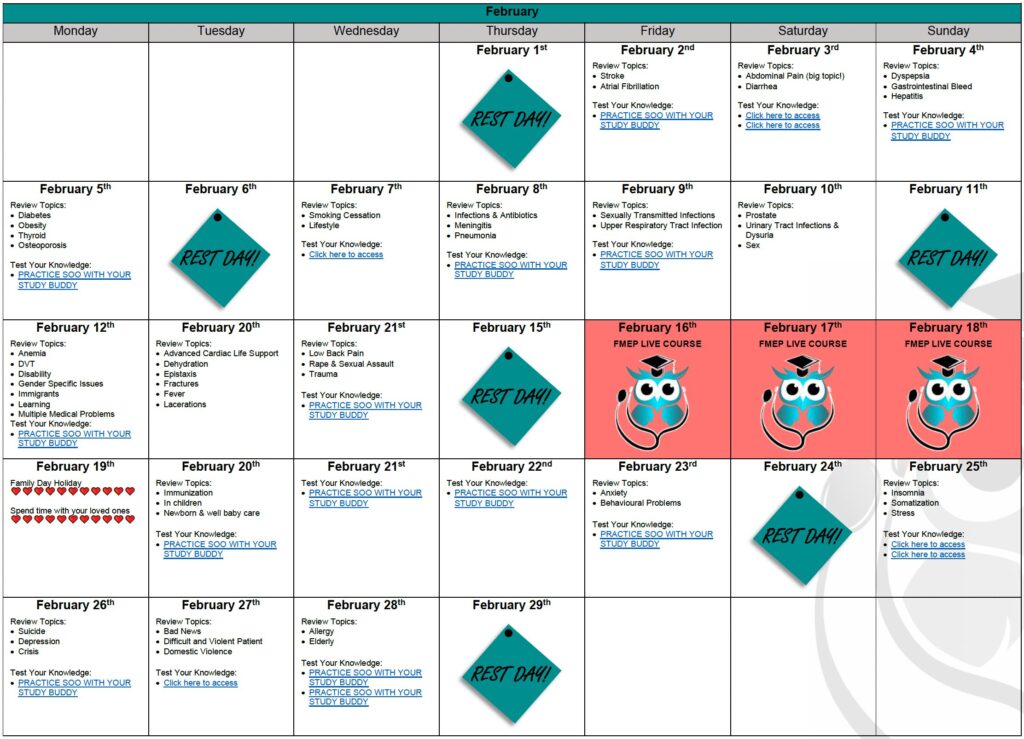
YOUR DETAILED CCFP EXAM STUDY CALENDAR: BE PREPARED!
The CCFP exam is quickly approaching. We know you are juggling many personal and professional...
Comments Off on YOUR DETAILED CCFP EXAM STUDY CALENDAR: BE PREPARED!
Just a reminder… pay attention to the questions. Here are our general tips one more time:
1. Pay attention to the questions. Look carefully at how many items you are being asked to list. If the question asks for five items, you will not get more marks if you list eight items; the examiner will look at the first five and allocate marks only for the first five answers – so be careful. On a SAMP, if it is not clearly stated how many items you should list, look at the amount of points/marks being allocated for the question to get an idea of how many answers the examiner may be anticipating you write down.
2. Do not write lengthy answers. Most questions can be answered in 10 words or less!
3. Be specific when writing down investigations (hemoglobin instead of CBC; CT abdomen instead of CT).
4. Remember that trade names and generic names are both acceptable when writing down medications.
5. For more helpful tips, you can refer to CCFP’s SAMP instructions by clicking here.
SAMP
Shorty Attention is an 18-year-old male who comes to your office. He endorses more than 6 symptoms of ADHD and he is concerned both his academic and athletic life are being affected. His symptoms date back to at least the age of 6 (from what he can remember) but he managed to do well in school.
Now that he is in university, his symptoms are preventing him from concentrating and his grades are suffering. He is requesting medication to help him focus. (16 points)
1. Can a diagnosis of ADHD be made? (1 point)
2. True or false: ADHD is the most inheritable mental health disorder. (1 point)
3. True or false: CADDRA and CPS have stated that the diagnosis and management of ADHD should be done by physicians who specialize in pediatric ADHD. (1 point)
4. How is the diagnosis of ADHD made? (4 points)
5. List 3 common mental health comorbidities that coexist with ADHD. (3 points)
6. What is the recommended first-line therapy for preschool-aged patients? (1 point)
7. Before starting stimulant medication, what must you screen for in all patients with ADHD? (1 point)
8. List 2 side-effects of stimulant medication. (2 points)
9. What should you monitor at follow-up visits in patients taking stimulant medication? List 2 physical assessments. (2 points)